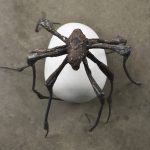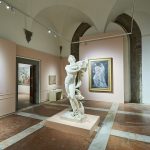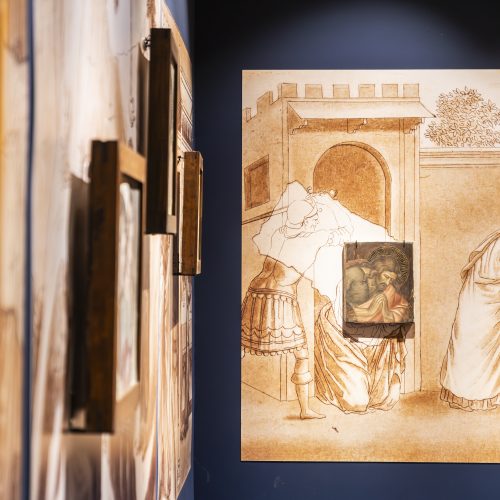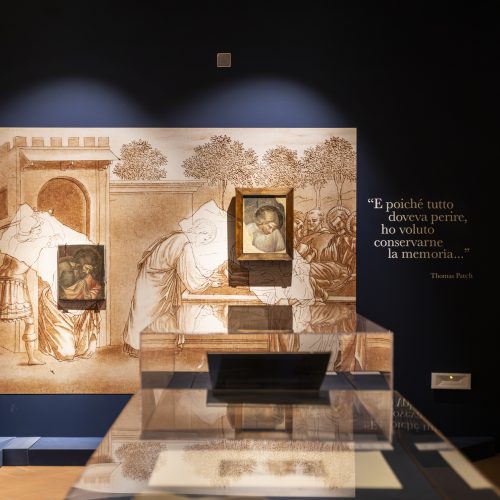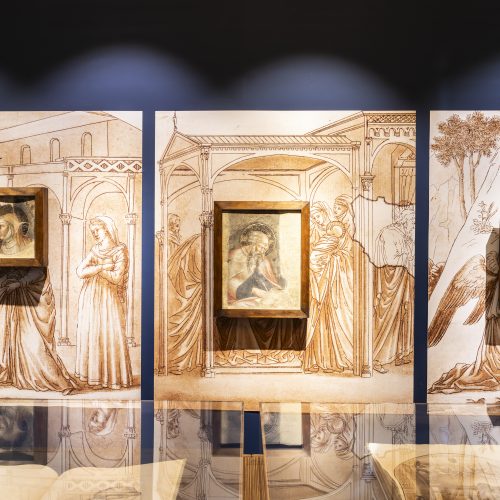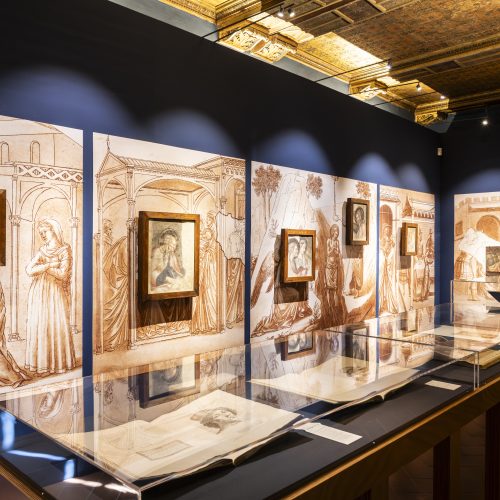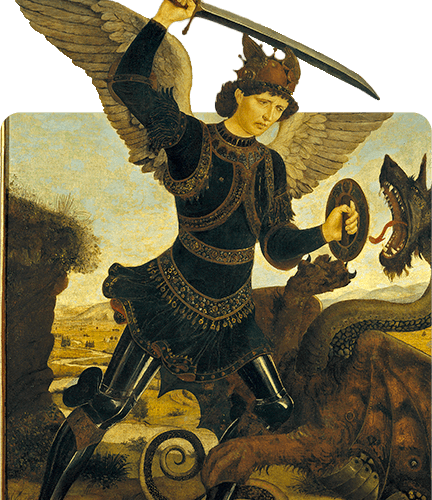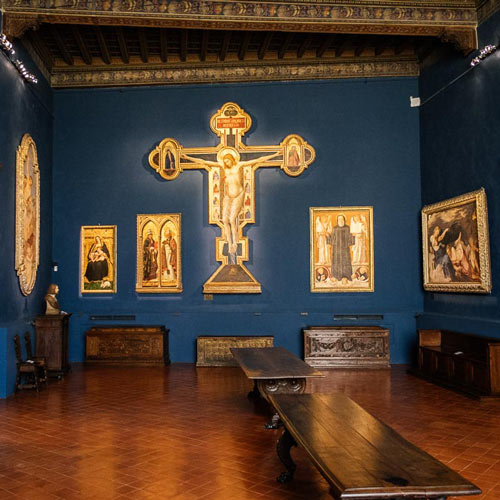Thomas Patch, The Memories of Middle Ages and Renaissance
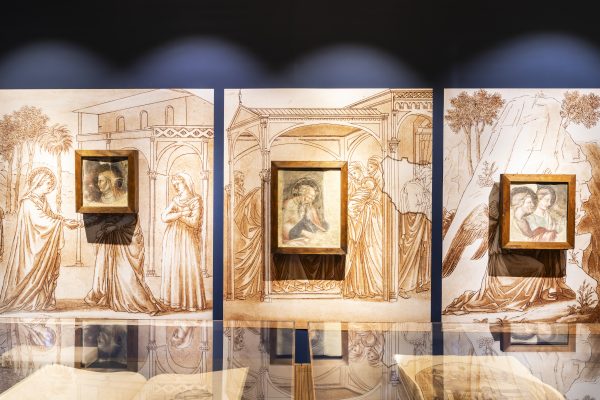
to 15 December 25
30 September
30 April
“I therefore believed that I could do a favour
for those interested in our history
and contribute to art by preserving its memory,
at least, by publishing a selection of heads
that I had carefully traced and engraved,
as well as two small group plates…”
Thomas Patch, The life of Masaccio, 1770
To mark the three-hundredth anniversary of his birth, Florence is paying tribute to the English painter, engraver, dealer and connoisseur Thomas Patch (Exeter, 1725–Florence, 1782) and his close ties with the city in an exhibition entitled Thomas Patch, The Memories of Middle Ages and Renaissance is promoted by the Municipality of Florence, curated by Giulia Coco, organised by Fondazione MUS.E, and will be held at the Stefano Bardini Museum from 3 October to 15 December 2025. The exhibition is coordinated by Carlo Francini and Valentina Zucchi.
Born in Exeter in 1725, Patch settled in Florence in 1755 after a period in Rome interrupted by papal expulsion. He made the city on the Arno his chosen home. There, he became a prominent member of the vibrant Anglophone community centred around Sir Horace Mann, as well as a key contact for scholars, aristocrats, and artists. A talented painter of landscapes and a perceptive caricaturist, Patch also had a deep interest in the art of the great Tuscan masters of the 14th and 15th centuries — the so-called ‘Primitives’ — and anticipated the critical revival these artists would enjoy in the 19th century. This exhibition showcases his significant publications on Giotto, Masaccio, Ghiberti, and Fra Bartolomeo della Porta, alongside several detached fragments from the Manetti Chapel in Santa Maria del Carmine. These fragments were rescued by Patch himself prior to the chapel’s dismantling and are on display here for the first time. They are valuable contributions to the appreciation of the late Middle Ages and the early Renaissance. Through his engravings, Patch made these masters’ masterpieces accessible to European audiences, promoting their study and appreciation.
Works such as The life of Masaccio (1770), The life of Fra Bartolomeo della Porta (1772), The life of Giotto (1772) and the series of engravings dedicated to the Gates of Paradise of the Florence Baptistery (1772–74, in collaboration with Ferdinando Gregori), including Thirty-Four Engravings of the Third Gate of the Baptistery of St John in the City of Florence, were ventures of extraordinary importance that helped spread the prestige of Florentine art beyond Italy to Britain.
In particular, The life of Giotto immortalised the paintings in the Manetti Chapel at the Carmine, which were initially attributed to Giotto but are now attributed to Spinello Aretino. Not only did Patch represent the scenes and selected details through engraving, he also managed to save some fragments, which were promptly put on the international market and are now dispersed across Italian and foreign collections. This exhibition showcases a significant portion of these fragments, with twelve of the Stories of St John the Baptist currently known. Seven of these are on loan from the Museo Nazionale di San Matteo in Pisa and the Pinacoteca Malaspina in Pavia, providing a unique opportunity to compare Patch’s engravings with the surviving frescoes, which are presented alongside an evocative installation.
Bringing the printed works and detached frescoes back before the public highlights Thomas Patch’s sensibility — he was a refined artist, connoisseur, and disseminator who spread the memory of, and desire for, Florence throughout Europe. His work, which is associated with the Grand Tour and in close dialogue with English collecting, thus enters into an ideal conversation with Stefano Bardini. Bardini built his career in the nineteenth century on the recovery and promotion of ancient works and detached frescoes, and the civic museum is dedicated to him.
A series of special events has been organised to coincide with the exhibition. On Sunday 19 October at 11:00, Giulia Coco will present ‘Thomas Patch and Florence: Memories of an Anglo-Florentine‘, discussing Patch and the Anglophone community in Florence during his lifetime. On 23 November at 11:00, Juri Ciani, Maria Grazia Cordua and Giulia Vaccari (Accademia di Belle Arti di Firenze) will present ‘The Historic Plaster Cast of the Gates of Paradise: Conservation and New Strategies for Access and Enhancement‘. This presentation will cover the cleaning of the Ghiberti cast, which is housed at the same institution, as well as the two photogrammetric digitisations (before and after cleaning). These investigations are preliminary to the creation of virtual models, which will be useful for the conservation and study of the object. Finally.
The events are free of charge and do not include admission to the museum. Booking is required at info@musefirenze.it | +39 055 0541450
In addition, two special visits to the historic cast will later be organised at the Accademia di Belle Arti in relation to the ongoing investigations on the plaster cast of the Gates of Paradise.
Thomas Patch (Exeter, 1725 – Florence, 1782).
A short biographical profile
by Giulia Coco
Thomas Patch was born in Exeter, Devon, in March 1725. He was the eighth of twelve children born to the surgeon John Patch and Hannah Burnett. He studied medicine at the Devon and Exeter Hospital, before going on to study under Dr Richard Mead in London. Mead was a scholar and art collector who had transformed his residence at 49 Great Ormond Street into a veritable art gallery. It was there that Patch first encountered ancient and modern paintings and sculptures. In 1746, Patch abandoned his medical studies to devote himself wholly to art and set off for Italy with Richard Dalton, a draughtsman, engraver and antiquarian known in Mead’s circle. Upon arriving in Rome, Patch met Claude-Joseph Vernet, who introduced him to landscape painting, particularly views of the Roman and Lazio countryside. These were highly sought after by compatriots and foreign visitors as souvenirs of their Grand Tour.
In Rome, Patch became friends with Joshua Reynolds, who was in Italy between 1750 and 1752 on his formative trip. The two shared lodgings at Palazzo Zuccari, as well as a mutual interest in caricature, a genre that Patch had practised since his student days. Indeed, Patch appears in Reynolds’ Parody of the School of Athens, painted in 1751.
However, at Christmas in 1755, a decree of expulsion accusing Patch of sodomy, signed by Pope Benedict XIV, forced the eccentric artist to flee Rome in dramatic fashion. He went to Florence, where he presented himself to the English resident, Sir Horace Mann. Mann soon became Patch’s closest friend and patron, persuading him to settle permanently in Tuscany.
A reference point for English visitors to Florence, Mann’s house in Via Santo Spirito (Palazzo Manetti) was an obligatory stop on the Grand Tour for artists and young aristocrats. Mann made Patch one of the protagonists of the city’s cultural and artistic life, into which the painter and engraver integrated brilliantly. Elected an Academician of Design (Accademico del Disegno) in 1759, Patch painted numerous views of the city and the Arno with its bridges, taking inspiration from the work of Giuseppe Zocchi, as well as producing caricatures of his fellow countrymen, both alone and in groups, during social gatherings at Palazzo Manetti. These gatherings, which were linked to Masonic circles, were also attended by some of Florence’s most lively and cultured figures, including Antonio and Raimondo Cocchi, as well as members of the local aristocracy.
A reference point for English visitors to Florence, Mann’s house in Via Santo Spirito (Palazzo Manetti) was an obligatory stop on the Grand Tour for artists and young aristocrats. Mann made Patch one of the protagonists of the city’s cultural and artistic life, into which the painter and engraver integrated brilliantly. Elected an Academician of Design (Accademico del Disegno) in 1759, Patch painted numerous views of the city and the Arno with its bridges, taking inspiration from the work of Giuseppe Zocchi, as well as producing caricatures of his fellow countrymen, both alone and in groups, during social gatherings at Palazzo Manetti. These gatherings, which were linked to Masonic circles, were also attended by some of Florence’s most lively and cultured figures, including Antonio and Raimondo Cocchi, as well as members of the local aristocracy.
As an antiquarian and art dealer, Patch frequently accompanied his fellow countrymen on visits to the Uffizi Gallery and was often consulted for his expertise. An inquisitive and knowledgeable connoisseur, he applied his early medical studies to the study of physiognomy. He owned a seventeenth-century copy of Leonardo da Vinci’s Precepts of Painting and was familiar with the studies of James Parsons, Johann Caspar Lavater and Charles Le Brun, who wrote about methods for learning to draw the passions. Patch was also well acquainted with Giovan Battista della Porta’s sixteenth-century treatise De humana physiognomia. In a self-portrait that once hung in Mann’s house, and in an engraving, he depicts himself with a human face and a bull’s body, in accordance with the theory of parallelism between humans and animals set out in the treatise. In one of his group caricatures, ‘The Music Lesson’ (Floors Castle, 1774), the artist depicts himself on the far right showing a guest a drawing of physiognomic studies taken from ‘The Rules of Physiognomy‘, which he holds under his arm. According to a nineteenth-century descendant, this manuscript — the fruit of his investigations — was never published because it was stolen and destroyed by a French count.
Struck by a heart attack in 1778, which slowed his activity, Patch suffered a second, fatal stroke on 29 April 1782 while at Palazzo Manetti. He was taken to his home in Via Santo Spirito and died the following day, attended by his friend Horace Mann. He was buried in Livorno on 2 May 1782 in the city’s non-Catholic cemetery. His grave was destroyed in the early twentieth century to make room for new burials.
Promoted by the Municipality of Florence
Curated by Giulia Coco
Organised by Fondazione MUS.E
Scientific coordination by Carlo Francini and Valentina Zucchi.

